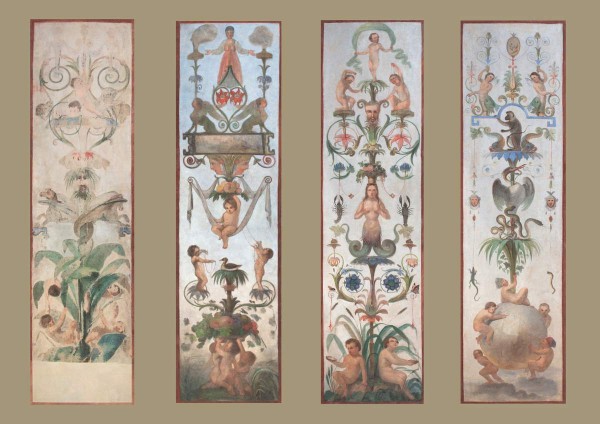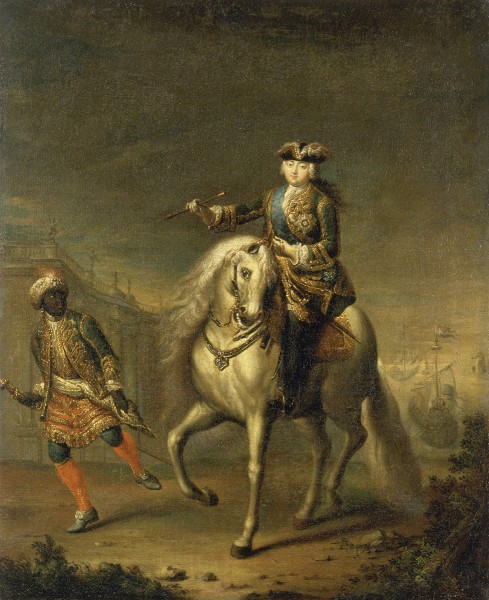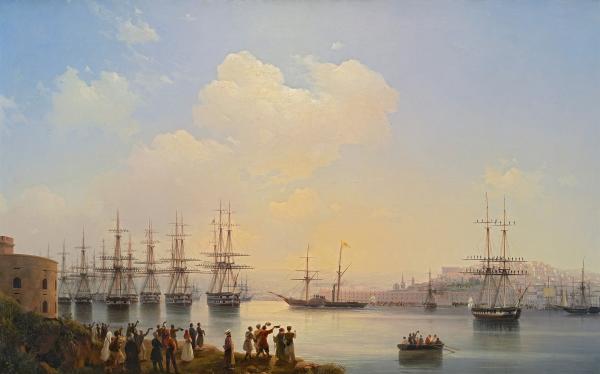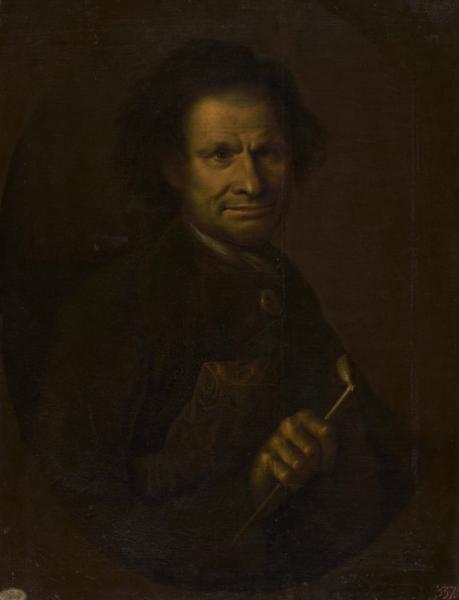The artist is unknown

+ About the restoration of the work
– Hide the text about restoration
The state of safety before restoration:
The panel is part of the internal decor of the “flower garden” of the winter garden of the marble palace-the interior created in 1848-50 by the architect A.P. Bryullov. According to the archival data, the paintings were performed by artists Dadonov and Wunderlich. In 1937. When reconstructing the hall of the palace for the museum in.And.Lenin by the architect n.E. Lancer Panel was dismantled by him from the walls (as evidenced by the inscription on the back of the canvases) and for a long time were stored in the family of his descendants.
During the reconstruction of the hall in 2007. The panel was purchased with.AND. Borovsky and donated to the Russian Museum.
Since the panel for a long time lay in folded painting inward, a huge number of destruction arose: hard fragments of the foundation and losing a colorful layer along the breaks. Thin adhesive painting on all panels suffered to varying degrees. Two panels: Zh-12168 and Zh-12170-lighter, fading of the colorful layer occurred. On the exhibit Zh-12167, the colorful layer was almost completely crumbling due to mechanical damage, only the general contours of the image are visible. The colorful layer of the panel Zh-12169 is better preserved in color, since the surface was hidden by dense persistent superficial contaminants. The thinnest woven base of the panel was strongly dilapidated, numerous nail punctures, small breakthroughs over the entire surface were visible around the perimeter. The lower fragment of the base was lost on the most severely affected panel Zh-12167 (about 10 kV. DM).
Complex of the activities:
The priority task during restoration was to strengthen the colorful layer, restore a weakened connection between the colorful layer, soil and the base, cleaning the surface from persistent pollution, and giving stability of the dilapidated fabric base.
It was decided to combine the cleaning of the front side of the surface pollution with the strengthening of the colorful layer.
The problem of duplication was that thin, porous, practically deprived of prolves can easily miss the dubbing glue on the front side, which is extremely dangerous, t.A colorful layer can irreversibly change in color to adhesive. Bastards of the base were covered, the lower part of the panel Zh-12167 is supplemented to the original size with an insert of a previously thinly primed canvas. After duplication, the exhibits were stretched on lightweight subframes.
The replenishment of the loss of the colorful layer is made by watercolor paints using gouache white. Due to the varying degrees of safety and a large number of losses, tinting was carried out in a conditional manner at the same time on all four panels in order to achieve exposition integrity. Upon completion of the restoration of the panel, they were mounted on historical places in the niches of the pylons of the “flower garden” of the marble palace.
Keeping a story. Restoration workshop of the Russian Museum – 100 years. SPb, 2022. With. 174-175.


